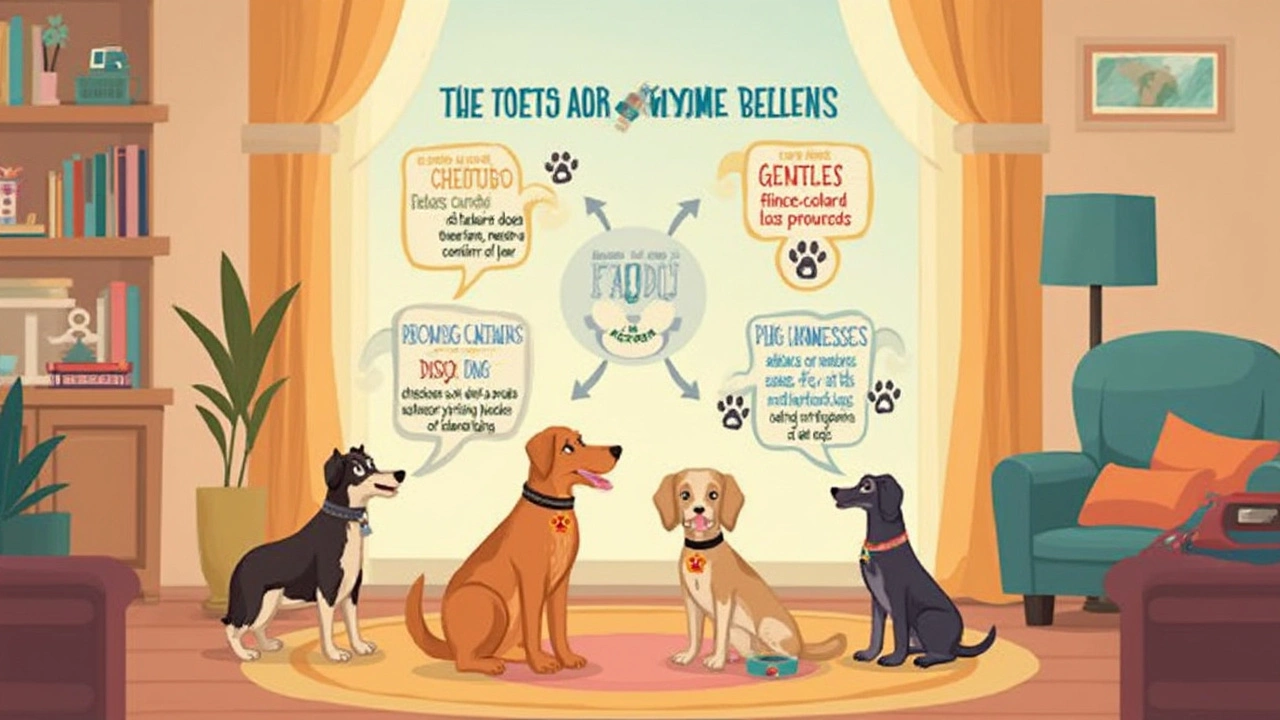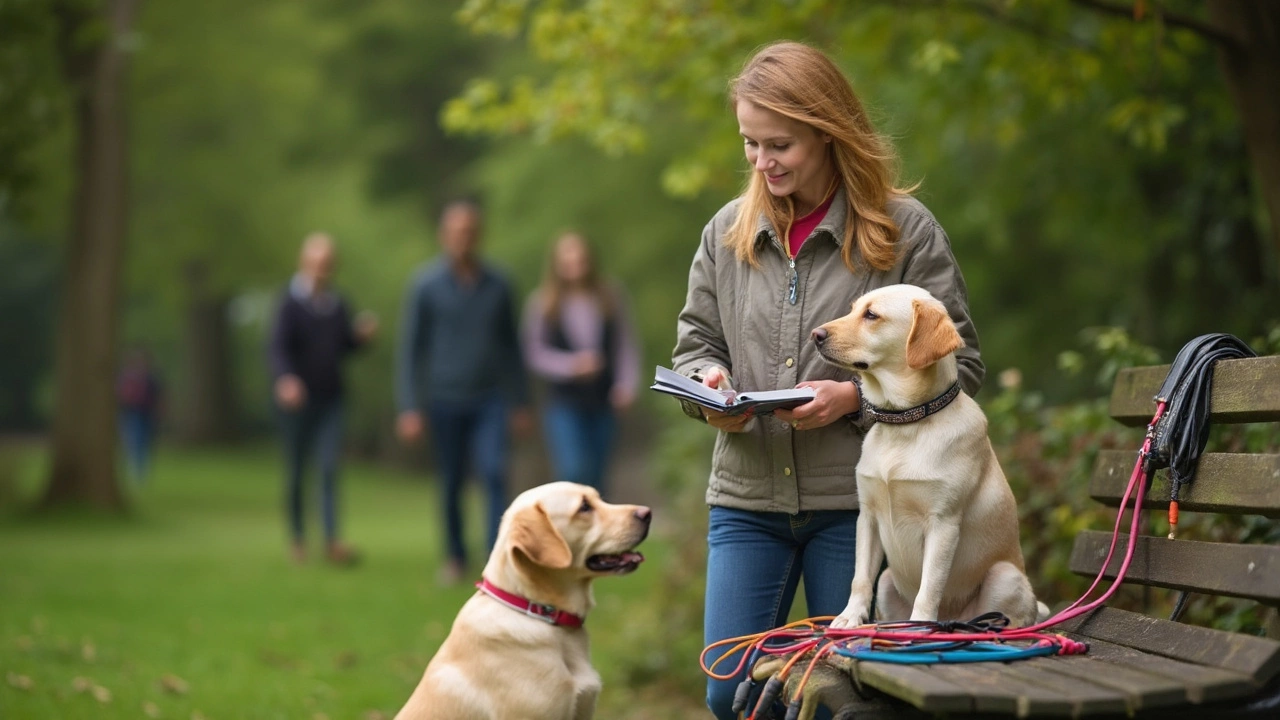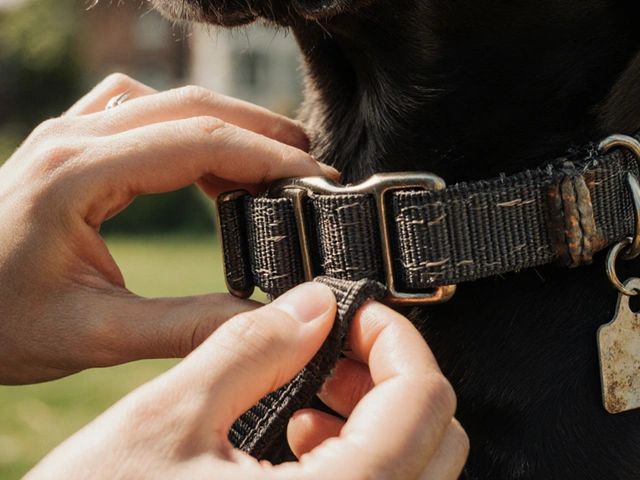Prong collars spark heated debates, and César Millan’s name comes up a lot when people talk about them. Some folks think they’re harsh, while others call them lifesavers for dogs that just won’t walk nicely on a leash. So what does Cesar Millan, the famous "Dog Whisperer," actually say about these collars?
Cesar doesn’t say prong collars are great for every dog. In his shows and interviews, he’s crystal clear: the tool itself isn’t evil, but in the wrong hands it can go south fast. He uses them sometimes, mostly with big, strong dogs who don’t respond to basic training. The key, he says, is knowing what you’re doing. If you’re clumsy or yanking too hard, you’ll just stress your dog out—or worse, make their behavior more unpredictable.
There’s more to this than just slapping on a collar and heading out the door. Cesar talks a lot about calm energy, practice, and building trust. The collar, for him, just gets communication started when a leash or a regular collar isn’t cutting it. But here’s a biggie—it’s not a shortcut. If you’re hoping a prong collar will magically “fix” a tough dog, chances are you’ll be disappointed or even create bigger problems.
- How Cesar Millan Sees Prong Collars
- Why He Uses Them—and When
- Common Missteps and Dog Safety
- Better Ways and Alternatives
How Cesar Millan Sees Prong Collars
If you ask Cesar Millan about prong collars, he’ll tell you straight up—they’re a tool, not a magic fix. He’s often seen using prong collar setups on his TV show, but he always points out that it’s about how you use them, not just what you clip to your dog. What stands out is how much he talks about technique and timing, not just the gear.
Cesar’s approach is rooted in energy and body language. He believes prong collars can help send clearer signals to a dog, especially if that dog’s ignoring regular cues. But here’s the twist: Cesar always says the human side of the leash matters most. If you’re anxious or frustrated, your dog will pick up on it no matter the tool you use. The dog training world is full of folks trying to shortcut real work by relying only on gadgets—the exact thing Cesar warns against.
In interviews and on his site, Cesar repeats one key line: “Tools don’t train dogs. People train dogs.” He stresses that even with a prong collar, it’s the handler’s knowledge that makes or breaks things. He recommends these collars only when owners have tried softer options, and then only under the guidance of a pro who knows dog behavior.
Cesar’s not out here claiming prong collars are safe for every pup. In fact, he says you should avoid them if your dog is scared, insecure, or has medical problems with their neck or throat. Used wrong, he admits they can hurt or freak out a dog. But under the right conditions, he’s shown they can help a strong dog learn to focus and stop yanking the leash.
He also shares a practical tip: the collar should fit high on the neck, right behind the ears, not down low near the chest. This increases control and avoids choking. Placement and fit matter a lot more than most people think. Here’s a simple breakdown Cesar often emphasizes for dog training success:
- Stay calm and use relaxed energy—your mood sets the tone.
- Choose the right size collar for your dog’s breed and weight.
- Position the collar correctly, up high behind the ears.
- Never yank or jerk the leash; give quick, gentle corrections.
- Use the collar as a communication aid, not a punishment tool.
So if you’re thinking about using a prong collar after seeing Cesar Millan, just remember—he’s all about education, not shortcuts. And if you’re new to dog collars or nervous about training, his advice is to get a pro’s help before you try anything out of your usual routine.
Why He Uses Them—and When
Cesar Millan doesn’t reach for the prong collar right away. He sees it as a tool for certain situations, not a go-to for every pup. He usually reserves it for dogs who’ve blown through the basics—think big breeds that are physically strong, super reactive, or simply aren’t listening to regular collars. If a dog is dragging their owner down the street like a water skier or totally ignoring leash cues, that’s when you’ll see a prong collar come out on his shows.
Here’s the thing: Cesar Millan always explains that the collar by itself won’t magically make a dog obedient. He stresses timing and technique way more than the gadget itself. He has a strict checklist before putting one on a dog:
- The owner must have already tried gentle techniques—positive reinforcement, food rewards, standard collars—but the dog simply overpowers them.
- The dog can’t be aggressive or scared; the collar isn’t for fixing deep fear or trauma issues.
- He fits the collar properly, so it sits up high on the neck, just behind the ears—a spot with more control but less risk of injury.
He’s frank about misuse. If you just jerk the leash or leave the collar on all day, you can seriously伤_hurt your dog. Cesar Millan uses quick, gentle corrections—not constant pressure or rough leash yanks.
One surprising thing: He likes to hand off the leash right away to the dog’s owner after showing how to use it. He wants everyday people to see that the prong collar is simply communication—not punishment. “You don’t dominate the dog,” he says. “You communicate with calm, assertive energy.”
You might be wondering just how common prong collar use is with Cesar Millan. On his TV shows (especially “Dog Whisperer”), you’ll see prong collars used on less than 1 in 10 dogs—usually the toughest cases. He doesn’t advocate prong collars for puppies, elderly dogs, or breeds with fragile necks. This lines up with what most professional trainers say: these collars are a last resort, never a first step.
| Situation | Cesar's Position |
|---|---|
| Basic obedience for new dogs | No prong collar |
| Physically powerful, unresponsive dogs | Sometimes used |
| Fearful or aggressive dogs | No prong collar |
| Owners new to dog training | Discouraged |
If you’re thinking about trying a prong collar because you saw Cesar Millan use one, make sure you know his whole process. It matters way more than the collar itself.

Common Missteps and Dog Safety
A lot of folks grab a prong collar thinking it’s a magic fix, but that’s usually where problems begin. Even Cesar Millan points out that most mistakes happen before anyone snaps on the leash. If you’re not trained to use these collars, you might get things really wrong, really fast.
Here are some common pitfalls:
- Wrong fit: This is a big one. A prong collar should sit high up on your dog’s neck, right behind the ears. If it slides down to the shoulders, it barely works and can dig into your dog, causing pain instead of clear communication.
- Constant pressure: Some people leave the leash tight all the time, which totally defeats the tool’s purpose. It’s supposed to give quick, gentle corrections—not constant pressure. When used the wrong way, it just adds stress and confusion.
- Starting with a prong collar: Jumping right to a prong before trying basic positive training is backward. Both dog training pros and folks like Cesar Millan start simple, reaching for tools like prongs only when other collars fail or when safety’s at stake.
- Using it for the wrong dog: Small breeds, frail seniors, or puppies should never get a prong collar. These collars are made for strong, stubborn dogs that ignore other tools.
- No professional help: Trying to figure it out alone isn’t smart. Even Cesar admits he learned from pros before ever using these collars himself.
When it comes to dog safety, watch for red flags. If your dog yelps, shrinks away from you, or suddenly starts acting terrified on walks, something’s off. Remove the collar and rethink your approach. Short training sessions beat long, stressful battles.
Real talk: There have been cases (and lawsuits) where improper prong collar use caused neck injuries or emotional scars. One 2019 study found nearly 30% of collar injuries at vet clinics involved prongs or choke chains—not exactly a coincidence. Here’s a quick table to show what kind of problems pop up:
| Injury Type | Common Causes | Frequency (%) |
|---|---|---|
| Skin irritation | Poor fit, constant pressure | 42% |
| Neck sprain | Harsh leash tugs | 19% |
| Behavioral issues (fear) | Improper use, lack of trust | 22% |
If you’re set on trying a prong collar, get help from a trainer who’s cool with this method and knows what they’re doing. It’s not about being tough—it’s about helping your dog feel safe and learn without fear.
Better Ways and Alternatives
Before you reach for a prong collar, dog training experts like Cesar Millan usually suggest trying other options first. Most dogs don’t actually need a prong collar if you start with the basics and focus on positive, consistent habits. Here’s where things get practical.
Harnesses, especially no-pull designs, can do wonders for stubborn pullers. A front-clip harness gently redirects your dog without causing pain, and most dogs adjust pretty quickly with a little guidance. Some trainers and vets even recommend head halters for strong breeds—they can give you more control without discomfort.
Food rewards and voice praise might sound old-school, but if you’re dealing with normal leash-pulling, they pack the most impact. This approach takes patience, but the pay-off is huge—a dog who listens because they want to, not because you’re forcing them. Here’s a quick list of pointers:
- Use treats to reward loose-leash walking, not just at home but out on real walks.
- Keep sessions short and fun—dogs tune out when things get boring or tense.
- Change directions when your dog pulls ahead. This teaches them to pay attention to you.
- Practice every day, not once in a while. Consistency really is the secret sauce.
If you’re dealing with real aggression or anxiety, a professional trainer or behaviorist is worth the money. Modern training relies on teaching dogs what to do, instead of just correcting what they shouldn’t. Plenty of trainers certified by the International Association of Canine Professionals steer clear of force and tools like prong collars, unless there’s no other option.
Want some hard numbers? Check out this quick table on tool preferences among dog trainers from a 2023 industry survey:
| Training Tool | % of Trainers Who Use Regularly |
|---|---|
| No-pull harness | 75% |
| Head halter | 40% |
| Prong collar | 22% |
| Flat collar/leash only | 60% |
Bottom line? Prong collars aren’t your only option. Most of the time, with some patience and the right gear, your dog can become a leash pro without the drama. It’s all about finding the best fit for your dog’s needs—and your comfort level as their trainer.







